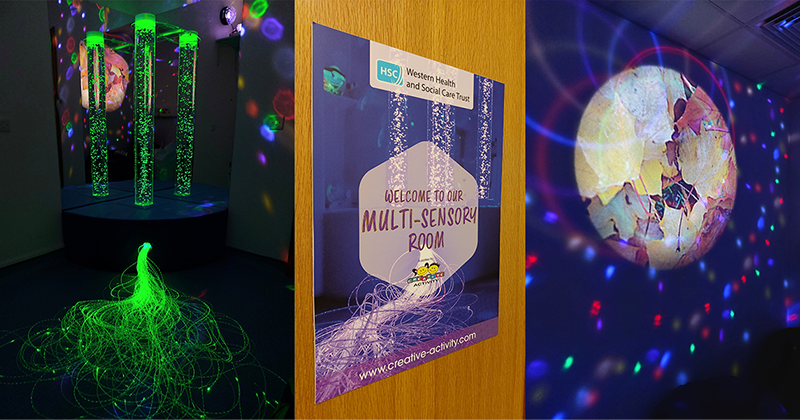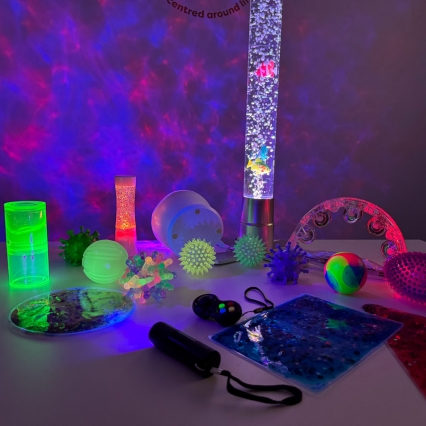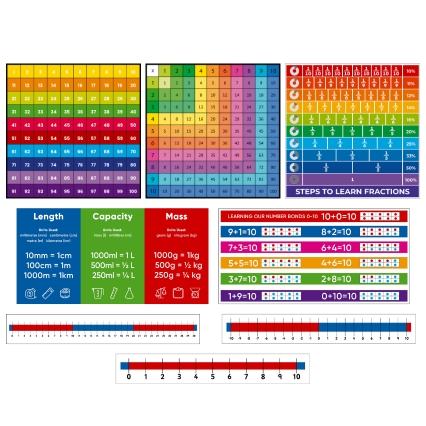We use cookies to make your experience better. Learn more
Creating Sensory Rooms in Emergency Departments

Creating Sensory Rooms in Emergency Departments: A Haven for Individuals with Learning Disabilities
An emergency hospital visit can be an overwhelming and an anxiety-inducing experience for anyone, but for individuals with learning disabilities, the challenges can be particularly heightened. Recognizing the unique needs and support requirements of these individuals, the implementation of sensory rooms within emergency departments has proved to be transformative for both patients and care givers.
Over the past few months, the team from Creative Activity Group have installed a number of sensory rooms into hospital settings, and most recently into the emergency department at South West Acute Sensory Department which has had a hugely positive impact on the patient care of both adults and children.
In this blog, we explore the importance and benefits of creating sensory rooms to support children and adults with learning disabilities during visits to hospital emergency departments.
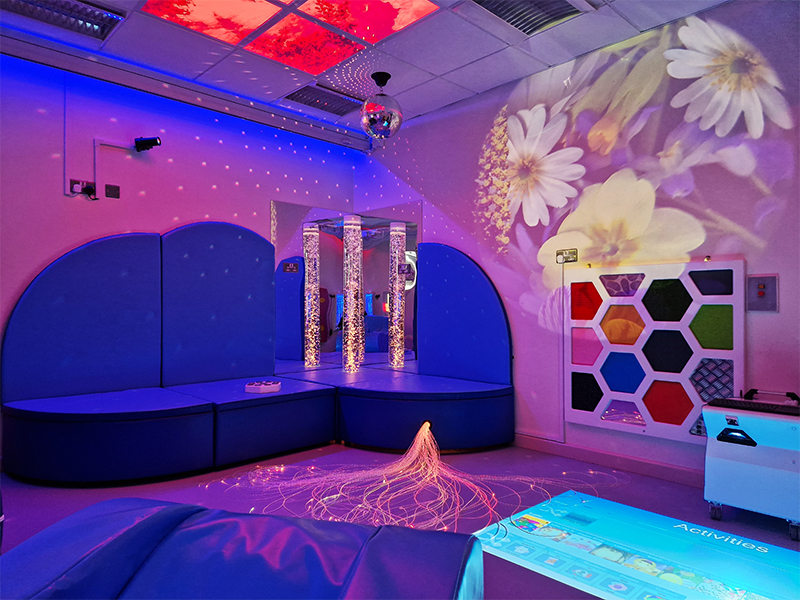
Understanding the Challenges: Sensory Overload in Emergency Situations
Individuals with learning disabilities, such as autism spectrum disorder (ASD) or attention-deficit/hyperactivity disorder (ADHD), often experience sensory sensitivities that can be triggered or aggravated in high-stress environments such as hospital visits. The bright lights, loud noises, and unpredictable nature of emergency situations can lead to sensory overload, resulting in heightened anxiety and distress.
In recent years healthcare trusts have started to recognise the challenges faced by those with learning disabilities and neurodiverse conditions in hospital settings. Recent research has clearly identified that Sensory overstimulation in emergency departments can lead to physical and psychological distress that may trigger agitation and aggression and therefore the use of sensory rooms are becoming a common fixture in emergency departments, providing a controlled and calming environment, offering a respite from the sensory stimuli that can be overwhelming for individuals with a variety of learning disabilities and neurodiverse conditions.
Creating a Calming Atmosphere: Design Principles for Sensory Rooms
The design of sensory rooms in emergency departments requires thoughtful consideration of the unique needs of individuals who will be using it. Calming colours, soft lighting, and comfortable furnishings form the foundation of a sensory-friendly atmosphere. Wall padding and soundproofing materials help dampen external noises, creating a quiet and soothing space.
For children, incorporating familiar and comforting elements, such as toys or soft blankets, can provide a sense of security. Interactive elements, like tactile surfaces or bubble walls, can engage and distract, serving as effective tools to manage anxiety during the often chaotic emergency department experience.
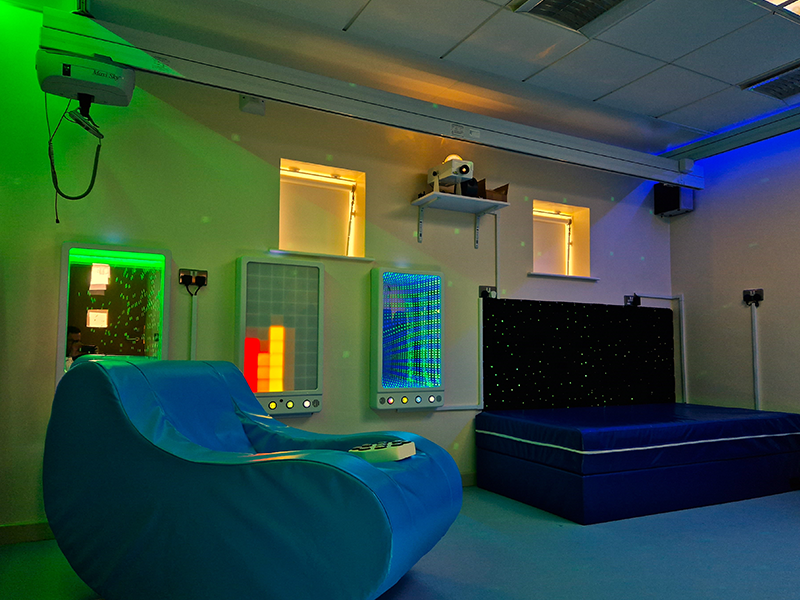
Individualized Sensory Experiences: Tailoring the Environment
One of the key advantages of sensory rooms is their adaptability to individual preferences. In the context of an emergency department, customization becomes crucial. The ability to adjust lighting levels, control the volume of sounds, and choose from a variety of sensory stimuli enables both children and adults to tailor their environment to their specific needs.
Consider the scenario of a child with autism arriving in the emergency room. The sensory room allows for personalisation, enabling the child to choose calming colours, adjust the lighting to a comfortable level, and engage with familiar sensory activities. This individualized approach not only contributes to the child's comfort but also aids healthcare providers in delivering more effective and patient-centered care.
Improving Communication and Cooperation: Tools for Healthcare Professionals
Sensory rooms in emergency departments not only benefit patients but also provide tools for healthcare professionals to enhance communication and cooperation. Research has shown in order to reduce stimuli of individuals with ASD, many emergency department guidelines direct staff to adjust the environment in accordance with the sensory needs of the patient however, the due to the rapid pace of emergency departments and the urgency of care, and task of assessing and optimizing the environment to suit the patients individual needs can be challenging for staff.
The sensory room serves as a valuable resource for calming patients before medical procedures, facilitating more effective communication between healthcare providers and patients.
Research has also shown that the use of sensory rooms in emergency settings can lead to improved cooperation from patients with learning disabilities, making it easier for medical professionals to conduct necessary examinations and treatments. This, in turn, contributes to a more positive and efficient healthcare experience for both the patient and the healthcare team.
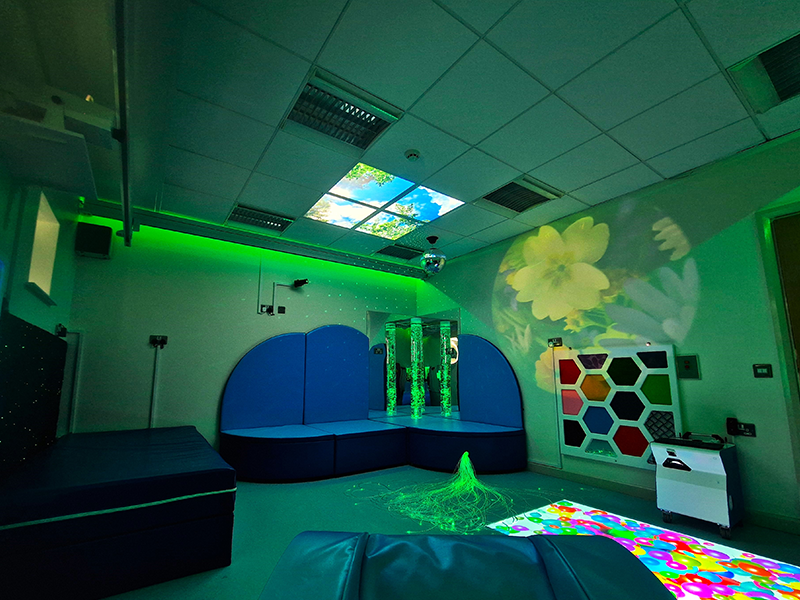
The Impact: Reducing Trauma and Creating Inclusivity
The implementation of sensory rooms in emergency departments for individuals with learning disabilities goes beyond immediate comfort; it plays a crucial role in reducing trauma associated with healthcare experiences for both adults and children.
Feedback from health professionals has demonstrated and supported the positive impact of sensory rooms in hospital settings. Instances where children with autism were able to receive necessary medical attention without distress, or adults with sensory sensitivities navigated emergency situations with reduced anxiety, highlight the profound effect of these specially designed spaces.
Conclusion: A Step Towards Compassionate Emergency Care
In conclusion, the integration of sensory rooms in emergency rooms for individuals with learning disabilities represents a significant stride towards more compassionate and inclusive healthcare. As hospitals continue to prioritize patient-centered approaches, the creation of sensory rooms within emergency departments stands as a testament to the commitment to providing accessible and supportive care for individuals of all abilities.
If you are a health care provider interested in discussing a bespoke sensory room for your setting please get in touch with our team today on [email protected] and they would be happy to provide a free site visit and quotation.
Sources: Autism Speaks Journal of Autism and Developmental Disorders
